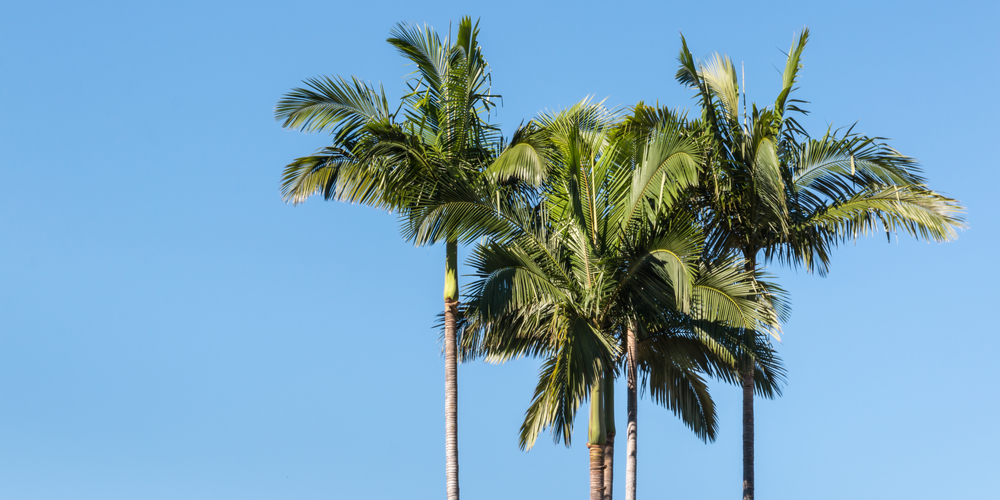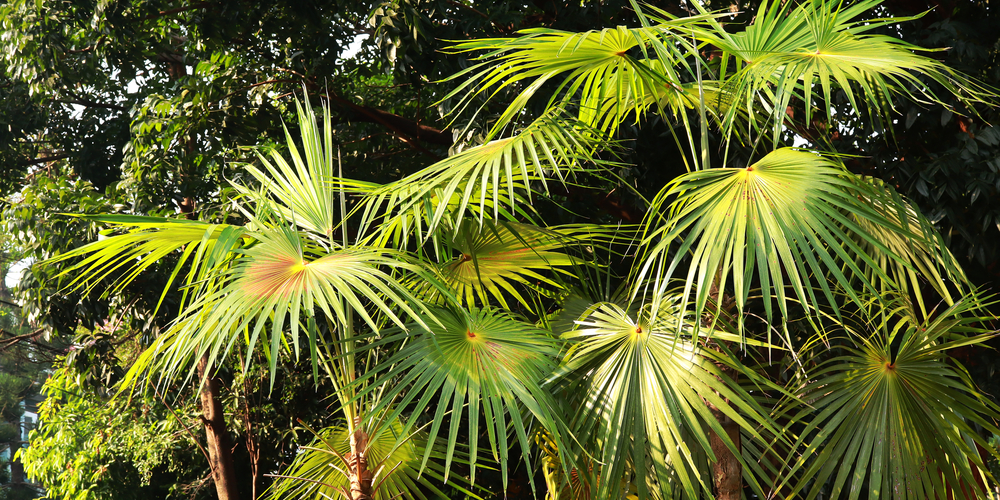Palm trees are tropical plants that thrive in hot weather. They can survive long periods of drought and are adapted to having very few rainfall per growing season.
An overwatered palm tree is a common issue with beginner gardeners, but this can be fixed to an extent. Here’s how to spot overwatering symptoms and the things you can do for your plant to recover.
Signs of an Overwatered Palm Tree
The most common symptoms of palm tree overwatering are as follows:
- Wilting
- New growth turning brown
- Shedding of healthy leaves
- Mold on soil
Wilting Foliage
Palm tree leaves are usually perky and grow upwards, and if the leaves are droopy and flop to the ground then it’s most likely a sign of overwatering.
Beginners often mistake it as a sign that the tree needs more water. However, it’s best to hold off and take a closer look before reaching for that watering can.
New Growth Concerns
A healthy palm tree will usually produce green growth that starts small, then matures as time passes. If you notice that new growth won’t make it to maturity then it may be because you’re giving it too much water.
Healthy Leaves Falling Off
A plant or tree that sheds its leaves is definitely a reason for concern, especially if the foliage was green and healthy before.
Leaves that fall off and are still green is a sign that your plant is getting too much water.
Mold on Soil
Root rot is difficult to spot especially on palm trees. What’s more, you may have to do some work to try and see if your plant’s roots are rotting from too much moisture.
However, there’s a way to tell if your palm tree is suffering from root rot- check the surface of the soil and see if there’s mold growing on the surface. The reason for this is simple- you’re not allowing the top inches of the soil to dry out and thus, reduce the presence of mold.
How to Fix an Overwatered Palm Tree
Change Your Watering Habit
Palm trees only need occasional watering as they can survive long periods of drought. If your plant is indoors then you need to water less.
It’s not a good idea to water palm trees everyday. Before watering, check and see if the top inch or so of the soil is dry to the touch. You can poke it with your finger, a wooden chopstick or a moisture meter and determine if your palm tree needs a drink, or if you can wait a day or two more.
Immediately after spotting overwatered palm tree symptoms you should withhold watering for several days.
Amend with Sand
Palm trees like warm weather and well-draining soil. You may not be watering every day but your potting mix might be holding on to too much water, which is slowly killing your plant.
You can try to fix this by removing the current soil from the container and adding sand. This allows for improved aeration and better water drainage. Amending will not only solve the overwatering problem temporarily but in the long-term as well since it will be unlikely that you will overwater it again.
Repot and Allow the Roots to Dry
Repotting a palm tree may be difficult but it’s necessary if you want to save your plant’s life.
The first step is to get the palm tree out of the container and inspect the roots. Using sterile garden shears or scissors you should remove roots that are brown and mushy while leaving the healthy ones alone. Leave it to air-dry for a day or two before putting it back in a pot with a new sandy garden mix.
You can reduce foliage to around a third to help the plant focus on developing new roots. Along the way, you can remove the brown leaves and dead foliage to improve its appearance.
Move to a Warmer and Brighter Location
Palm trees flourish in warm areas that get morning sunlight. You can reposition them to a window that fills in those requirements nicely so it can continue growing.
The heat and light help dry out the soil faster and eliminates concerns of the roots sitting in moist medium for too long.
Related Article: Are Palm Trees Native to California?

